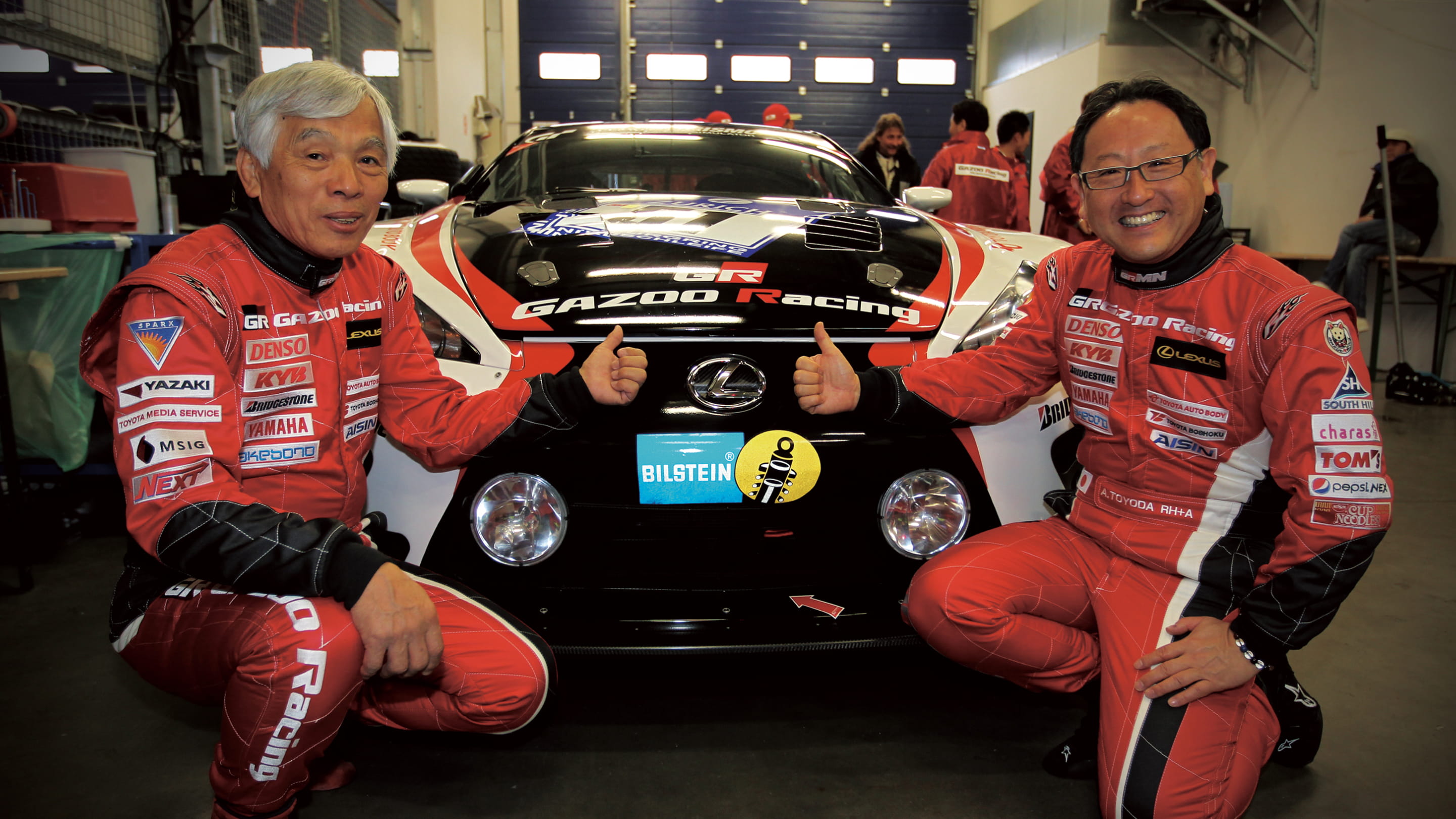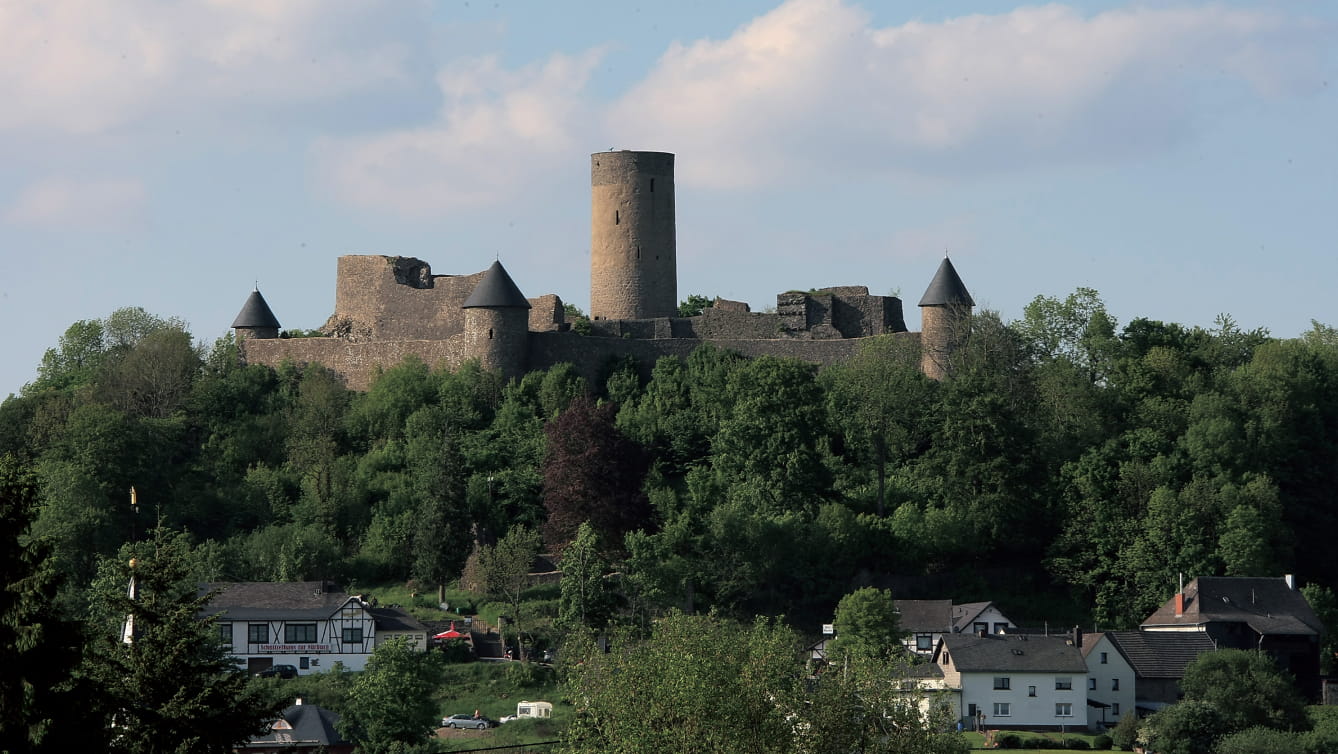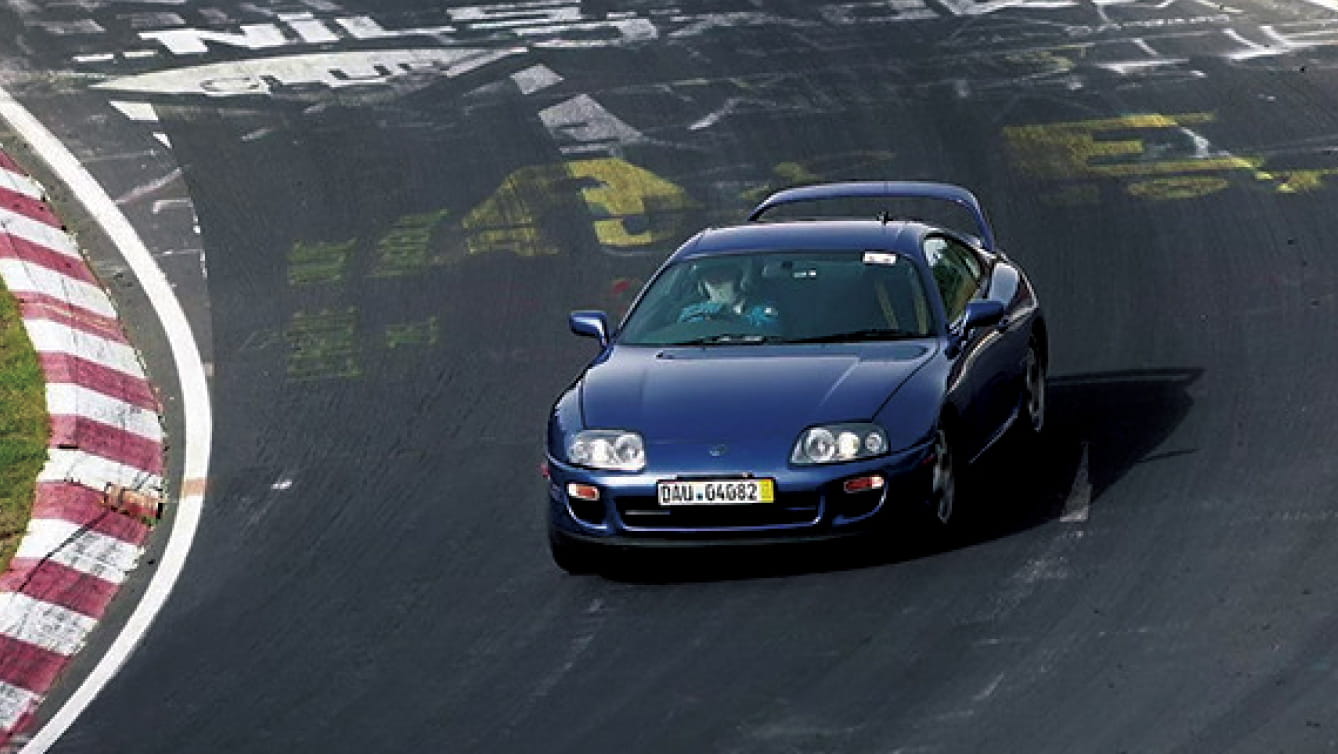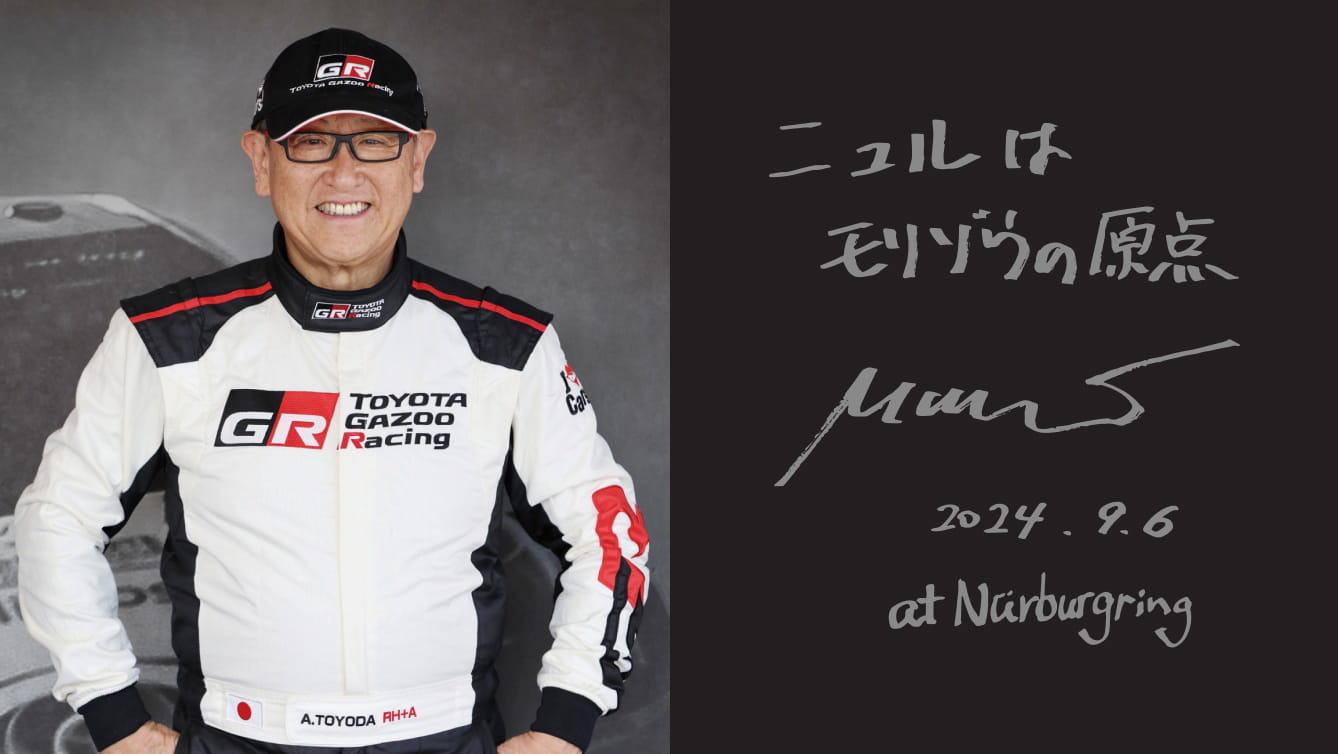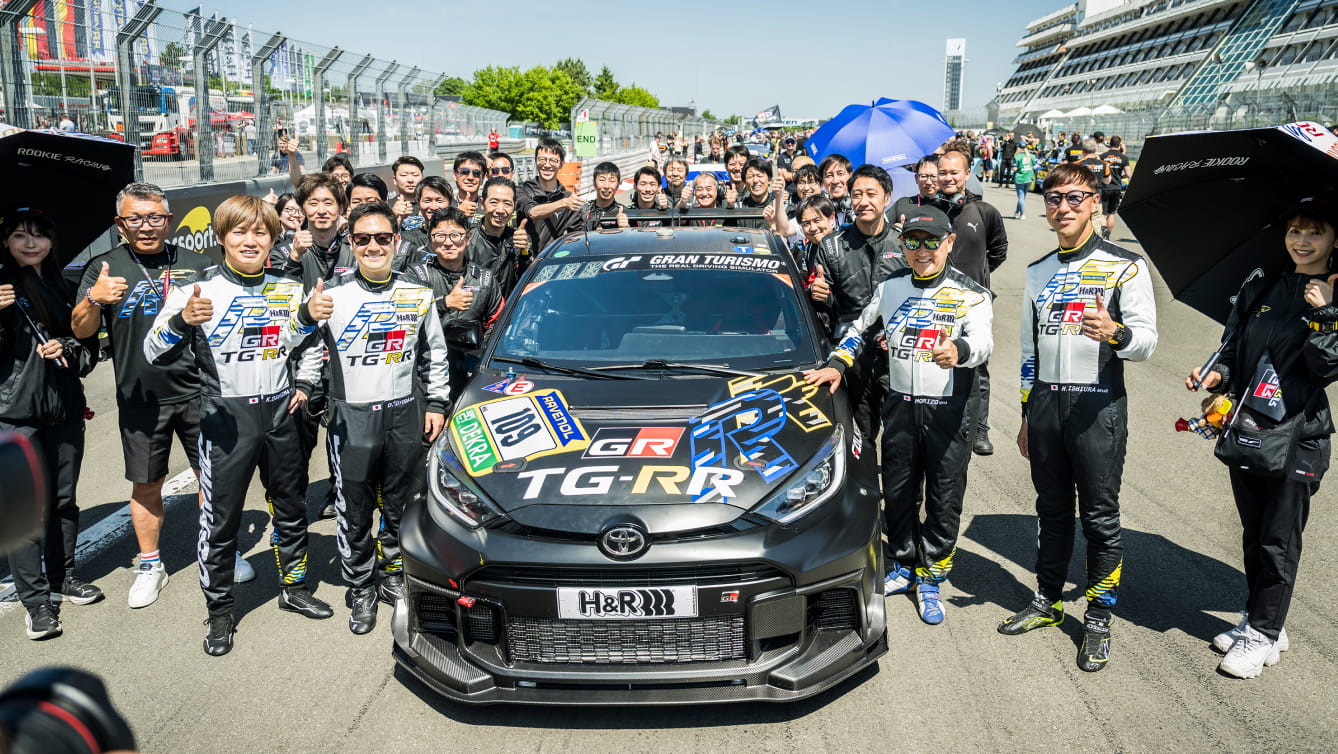The message master driver Hiromu Naruse wanted to share with Akio Toyoda
When Akio Toyoda speaks, the discussion often turns to Hiromu Naruse. Naruse was the cream of the crop of Toyota’s roughly 300 test drivers and Akio’s own driving trainer.
On June 23, 2010, he passed away in a traffic accident on the outskirts of the Nürburgring. Although 14 years have passed since then, when Akio reflects on Naruse, it becomes clear why Akio has dedicated himself so thoroughly to making ever-better cars.
Naruse joined the Toyota Motor Company (now the Toyota Motor Corporation) in 1963. His beginnings in the company were unusual: he was hired as a temporary worker in the Vehicle Inspection Division. However, vehicles had been a part of his life since he was a young boy, and he distinguished himself with startling speed. He became a member of Engineering Division No. 7, which was responsible for developing motorsports vehicles and racing, and rose to the position of chief mechanic of the Toyota 7 racecar.
In 1973, just before Toyota ceased its racing activities, he visited Europe to provide technical guidance for a 6 hour endurance race by the Celica 1600GT, led by a Swiss Toyota dealer. This was his first encounter with the Nürburgring, which he’d spend the rest of life racing. It is where he came to intuitively feel that “roads make cars.”
In the 1980s, starting with the first generation MR2, Toyota’s sports models were developed at the Nürburgring.
“Japanese circuits, which have well-maintained road surfaces, only reveal one-tenth of a car’s performance, but the Nürburgring uncovers 100 percent of a car’s capabilities,” he said. “For this reason, misrepresentation is impossible. Cars that are refined at the Nürburgring are truly powerful cars. It’s no surprise that the Supra still offers such high performance. That’s why we’re struggling to make a car that can surpass the Supra.”
The Supra continues to be used within Toyota as a driver training car. Among Japanese drivers, Naruse had one of the top number of years of experience driving in the Nürburgring and one of the top number of laps completed. His abilities were even recognized by overseas manufacturers, and it was rumored that he received an offer from Toyota’s rally team to drive for them.
He was involved in some form or another in the development of massproduction sports car models such as the Supra, but what’s more, testing of the Lexus LFA was also left entirely to Naruse. Other vehicles he was in charge of testing included the first generation Celsior and the second generation Prius. Naruse explained, “To me, racecars and trucks were all the same thing—vehicles—and it all came down to materials. My job was just to make 100% use of those materials.”

In those days, Toyota’s strategy was centered less on making good cars and more on making cars that sold well and were easy to manufacture. Achieving Naruse’s ideals was difficult. The driving feel achieved in prototypes could not be replicated in mass-production vehicles. He judged Toyota’s own vehicles without mincing words, and is even said to have told members of the automobile media that he was close to, “They won’t listen to me, so you say it. They might listen to an outside voice.”
Thanks to the skills he developed through his work in the field, he came to be known as the “Top Gun” of the test drivers. Furthermore, because of his direct experience in the field in places like the Nürburgring, he believed that both Toyota’s people and its cars had to be further refined if Toyota was to become a world-class manufacturer, and he took the lead in developing human resources.
These efforts were not limited to Toyota personnel, but also members of affiliated companies and of the automobile media. He also said the words that led to Akio’s own driving training.
“Somebody in your position, who doesn’t know the first thing about driving, shouldn’t make passing comments about cars. The least you can do is learn how to drive.” “You should recognize that, as test drivers, we’re putting our lives on the line to make better cars.”
People tend to focus on this part alone, but he didn’t stop there.
“If you feel like it, even if just once a month, I’ll teach you how to drive.” It epitomized Naruse: he may not have been the most eloquent speaker, but he took great care of people.
When asked about this comment, Naruse said, “Akio was just as dedicated to manufacturing as Eiji (Eiji Toyoda, Toyota Motor Company’s fifth president) and Shoichiro (Shoichiro Toyoda, Toyota Motor Sales’ fourth president and Toyota Motor Corporation’s first president). He didn’t just think “We’re making money, so we’re fine,Ebut instead recognized the risks involved, with a mentality of “We can’t sell a car like this. EI think Akio has a strong desire to drive cars and get a good feel for them as a manufacturer.”
Thinking back on it, Akio recalls that, surprisingly, it didn’t bother him. The comments led to Akio taking on Naruse as his driving trainer, and through the driving training, Naruse shared his experience and expertise, without holding back.
According to Naruse, “Races are the ultimate stage for passing on techniques and developing human resources. Carmaking is not debated using words and data; instead, discussions must center on actual vehicles that can be touched and seen firsthand.” He added, “To create good cars, you need to develop good people.”


